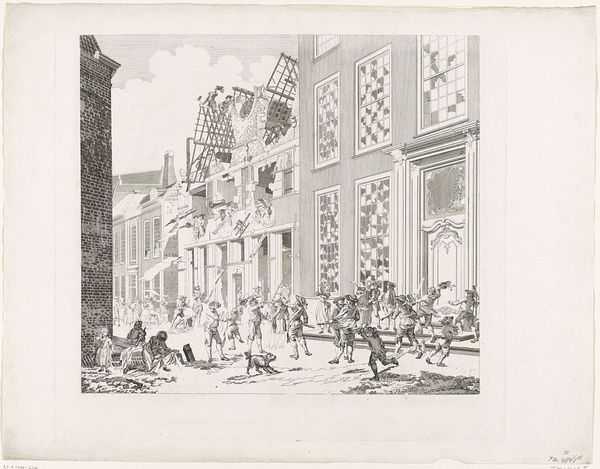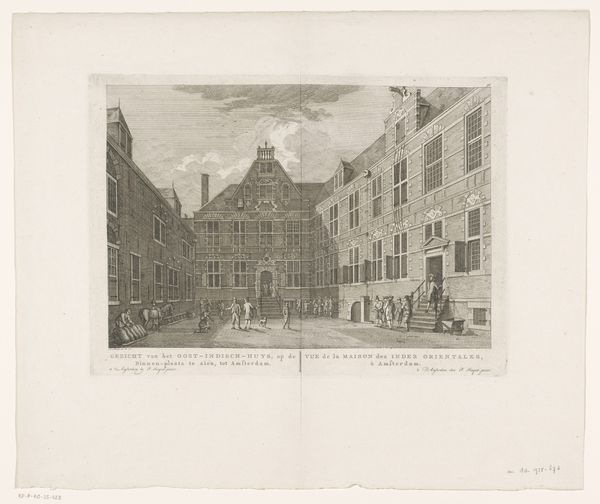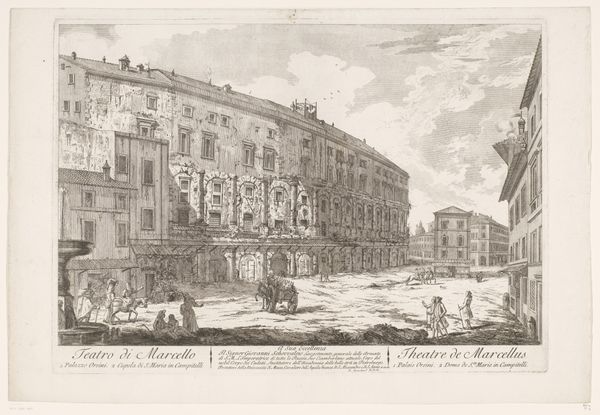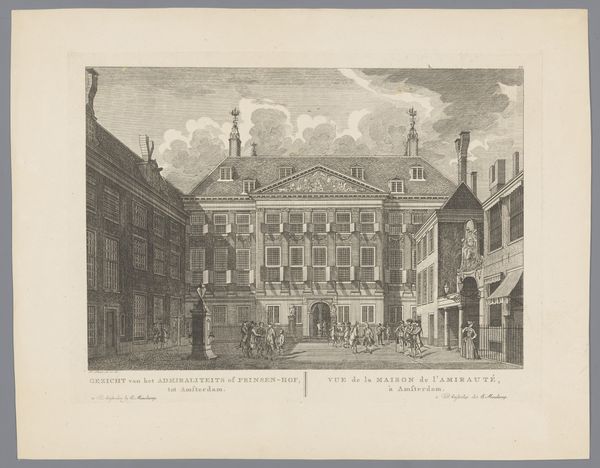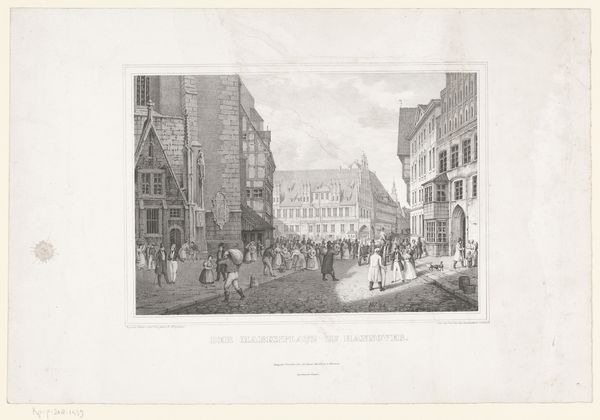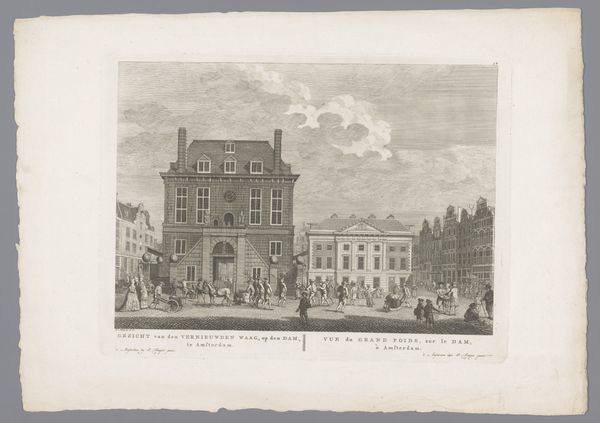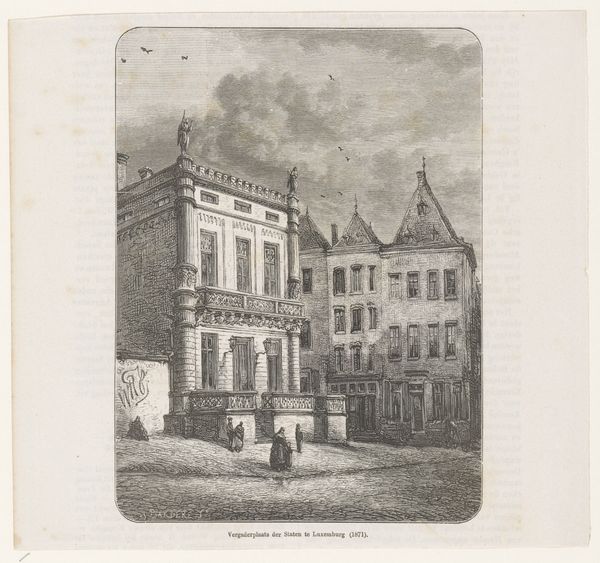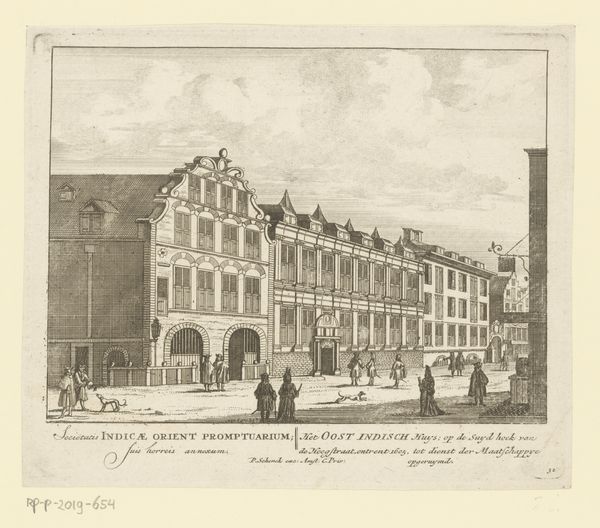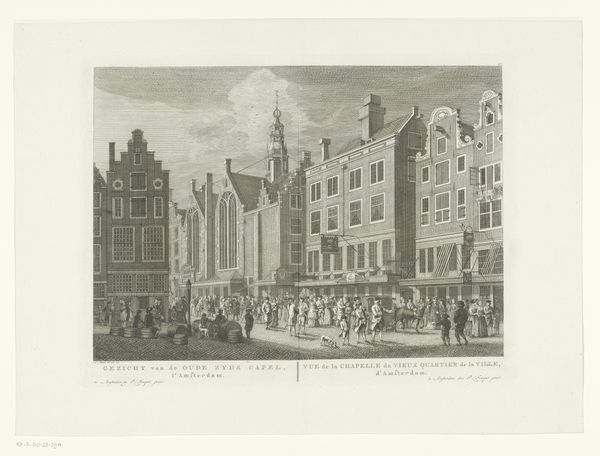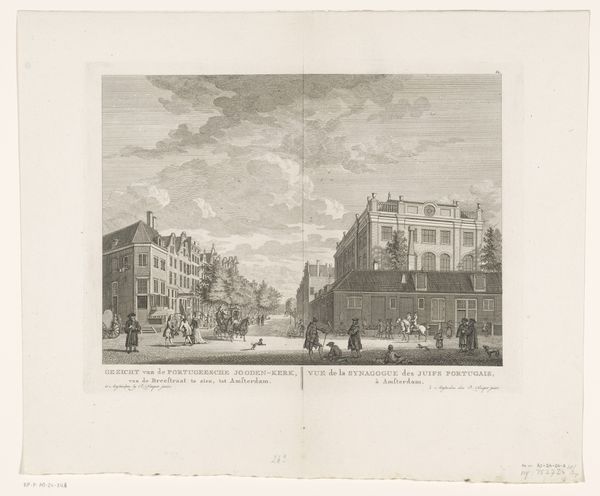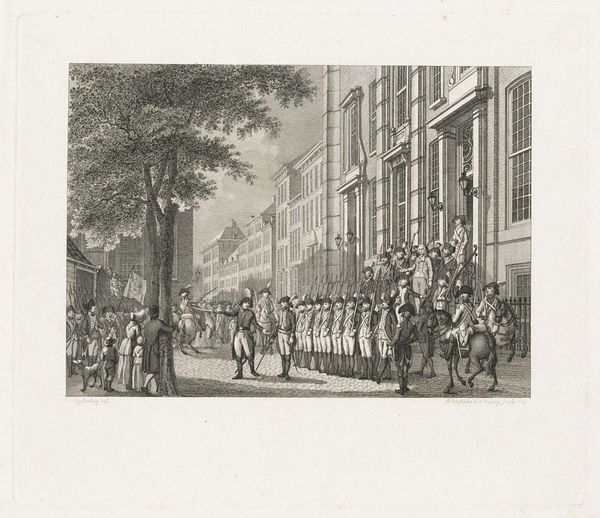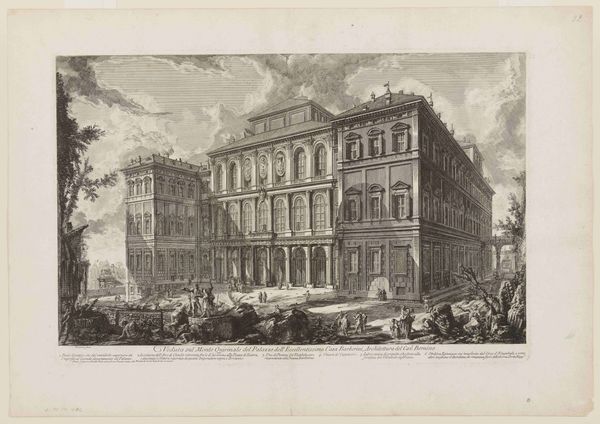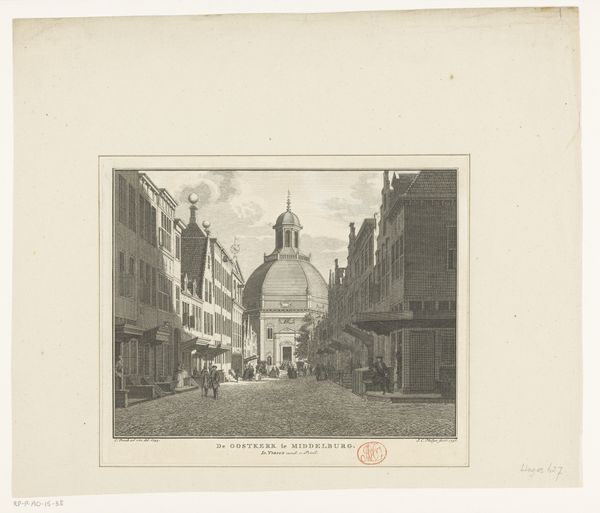
Dimensions: height 397 mm, width 425 mm
Copyright: Rijks Museum: Open Domain
Mathias de Sallieth created this print, "Plundering van het huis van Lucas van Steveninck," in 1787. At first glance, the detailed scene is dominated by a stark contrast between architectural order and chaotic destruction. The rigid lines of the building's façade are violently disrupted by the diagonal thrusts of broken timbers and the frenzied activity of the mob. The artist uses line and form to convey social upheaval. Notice how the precise rendering of architectural details contrasts with the more freely sketched figures, creating a visual tension between order and chaos. This contrast underscores the disruption of social norms and power structures during this historical moment. The composition itself becomes a semiotic system, where each element—the shattered windows, the collapsing roof, and the active crowd—signifies a breakdown of established authority. Consider how de Sallieth uses the print medium to create a powerful commentary on the instability of revolutionary times. The artwork invites us to decode its visual language, recognizing that the destruction is not merely physical but also symbolic of a society in flux.
Comments
No comments
Be the first to comment and join the conversation on the ultimate creative platform.
